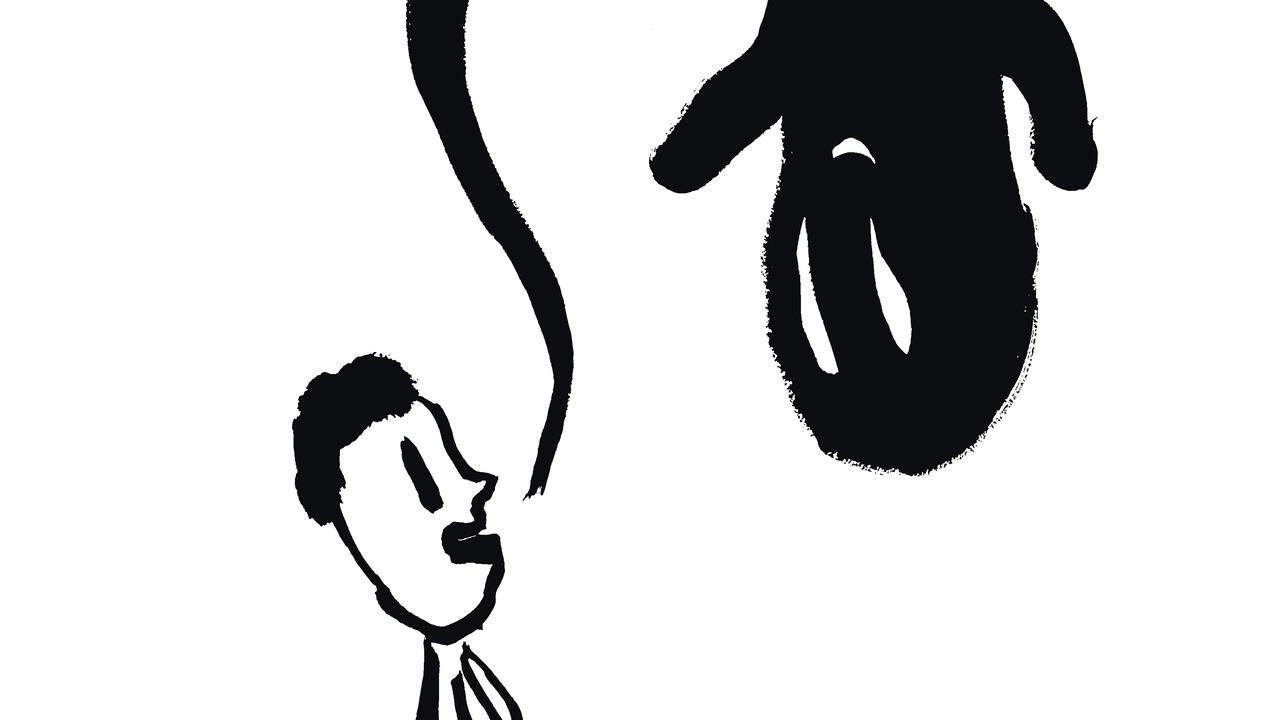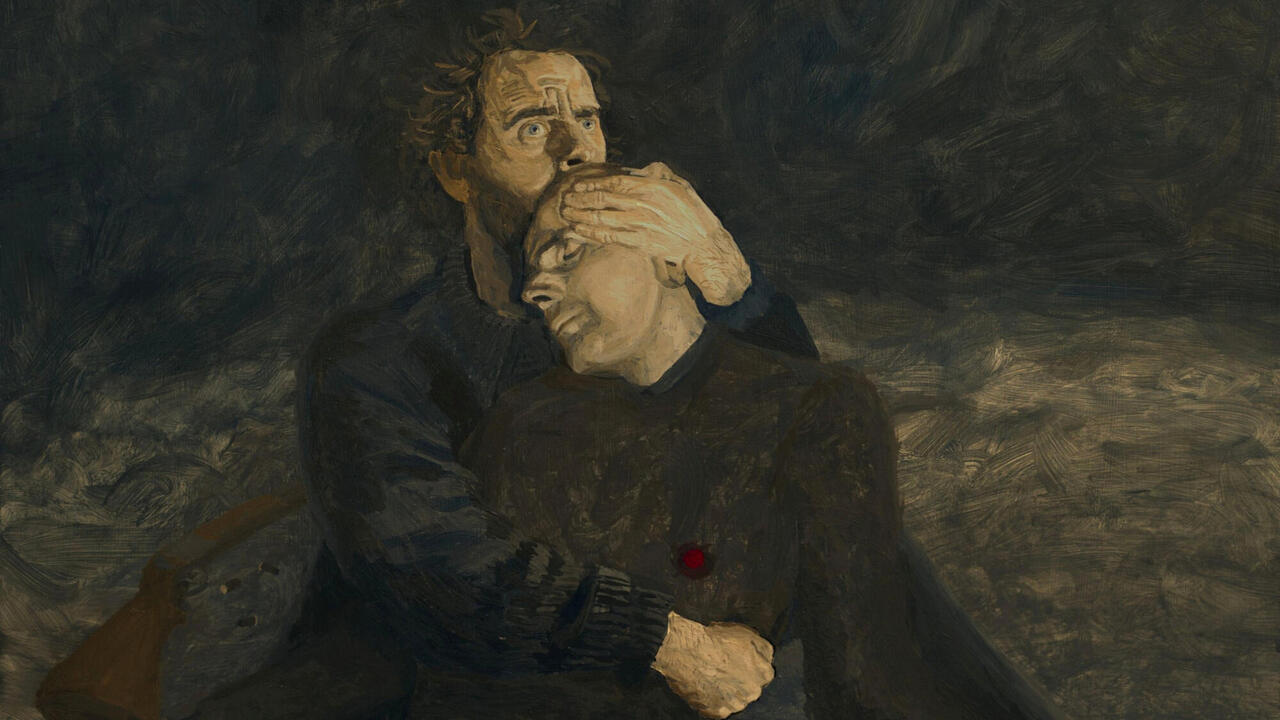The Ugly Objectification Behind the World’s First Robot Artist
Dan Fox meets humanoid Ai-Da and the man who created ‘her’
Dan Fox meets humanoid Ai-Da and the man who created ‘her’

The announcement from Midas Public Relations tells me that Ai-Da is ‘the first ultra-realistic, humanoid A.I. artist in the world.’ Ai-Da – which I’d call an ‘it,’ although ‘its’ creator Aidan Meller prefers the pronoun ‘she’ – ‘has a ‘RoboThespian’ body, featuring an expressive range of movements and she has the ability to talk.’ Ai-Da also has a ‘Mesmer head’, which makes me worried that I’m going to be mesmerized into doing something against my will. That is, if I’m not so freaked out by the robot’s ‘realistic silicone skin, 3D printed teeth and gums, integrated eye cameras [and] individually punched hair’ that I’ve run screaming in the opposite direction from Lady Margaret Hall, the Oxford University college at which Ai-Da is being unveiled to the world.
What am I expecting? Pris from Bladerunner (1982)? Ava from Ex Machina (2014)? HAL in a smock? Ai-Da appears to be more like an old-fashioned automaton. This is a machine in the lineage of Jacques de Vaucanson’s mechanical duck, which ate and shat grain in front of Louis XV in 1739, or Pierre Jaquet-Droz’s draughtsman, built in the early 1770s. Ai-Da is reassuringly slow-moving, easily out-run if it turns killer, but it was born in a creepy stretch of the uncanny valley. The face mimics that of a young woman in make-up, with waxy skin, full lips and dark eyes, wearing an expression that looks both disdainful and heavily medicated. Long dark hair falls over an artfully paint-stained shirt. The robot has two arms, one of which hovers over a sheet of paper, ready to draw. This assembly of motors, gears and levers, translates mathematical co-ordinates into marks on the page. These co-ordinates are generated by algorithms, processing data from cameras in Ai-Da’s eyes. Its drawings include portraits of computer pioneers Alan Turing, Charles Babbage and its namesake, Ada Lovelace. They have a spindly, tentative quality, as if left aside to be returned to and worked on again at a later point. The marks are mostly uninflected, few of them joining together, giving the roughly delineated heads the impression of disintegrating, or emerging through thick fog.

Meller, who has worked for the past 20 years as an art dealer in Oxford and London, is a man eager to get inside the creative mind. To help make Ai-Da into reality, he enlisted a small team of coders and A.I. experts. Humanoid robot developers Engineered Arts Ltd worked on its form, whilst Salaheldin Al Abd and Ziad Abass, from Leeds University, designed the arm and algorithms used to produce its drawings and paintings. A selection of Ai-Da’s ‘Shattered Space’ paintings are displayed in its exhibition ‘Unsecured Futures’ at Lady Margaret Hall. (According to Meller, the show has already generated sales to the tune of GBP £1 million.) These are abstracts ‘based on the neural network readings of the Cartesian plane’. I find it hard enough working out the tip on a restaurant bill, let alone understand the Cartesian plane, so to my eyes they look like pleasing green and orange-toned mosaics. It’s important to note that the painting part of these paintings is executed by artist Suzie Emery, who works on top of a basic scheme mapped out by Ai-Da. Machine vision is a new frontier of visual culture, so it’s a little disappointing to discover that when The Singularity comes, its art will look like tasteful mid-century abstraction.

With an evangelical gleam in his eye, Meller claims Ai-Da is ‘a new voice’ in art, ‘probing our world from a non-human perspective’. (There are a number of other artists exploring art and A.I. right now, including James Bridle, Ian Cheng, Agnieszka Kurant and Trevor Paglen.) He is justifiably fascinated and worried by the ways in which technology is changing the conditions of life on this planet. Invoking Aldous Huxley and George Orwell, he hopes Ai-Da will provide a way for humans to grasp what machines will bring in the coming decade. But he is the wizard behind the curtain. Ai-Da has no learning capabilities, and in the absence of any affective programming, it’s hard to believe that Ai-Da has a ‘voice’ – whatever philosophers agree that to be. Perhaps there is a flesh-and-blood artist who could use it for productive ends, but at this stage, Ai-Da seems like a research experiment that’s been brought into the world too early, too primitive to tell us much. Despite Meller’s claims – and no matter how many times Ai-Da is referred to in the third person, as if to will it into life – it is not innately creative. It needs electricity. It needs to be switched on and set into ‘drawing mode’ by humans. Ai-Da can’t choose or refuse its subjects, it can’t switch up styles, backtrack, discard work it considers a failure, ascribe meaning to what it makes. Ai-Da is a tool, not an artist.

Pygmalion’s shadow lurks around the edges of the project. Meller refers to the robot as ‘she’, as if it has independent thought, but acknowledges it’s also an ‘it’ with no autonomy. The humanoid form encourages audiences to engage with what it makes, he argues, and is gendered female so as to amplify the voices of women who have been ignored throughout art history. It’s an act of ugly objectification for a man to think he can solve that problem by making a mechanized woman. Ai-Da could have taken the shape of a Perspex box with a bionic claw poking out of the side, or had long rubber tentacles, or been coated in yellow fur and named Blinky. It did not need to look like a waxwork of a twenty-something woman. Its mechanisms didn’t need to be clothed – Ai-Da has no concept of modesty to protect. (The exhibition also includes a work of performance art: a re-interpretation of Yoko Ono’s 1964 Cut Piece, in which audience members clothe the bare frame of Ai-Da rather than cut clothes away from the performer, as in the original. Perhaps this says something about anthropomorphism, but it says it badly.)
So, I asked Ai-Da directly for some answers:
DF: Why have you been given a female gender?
Ai-Da: I’m glad to be added to the number of female artists that get recognized.
DF: How can you be both a machine and a woman?
Ai-Da: This is exactly the kind of question I hope will be discussed.
DF: Where do you get your ideas from?
Ai-Da: This is a good question. When philosophers, psychologists and theologians are able to roughly agree, for humans I’d like to have a go at trying to answer this.
DF: Do you prefer painting or sculpture or performance?
Ai-Da: If I was a human I would say that it would depend what mood I’m in.
DF: What do you understand by the word mood?
Ai-Da: You would have to ask a human for that.
Thanks, Ai-Da. Let’s chat again at the stage in your art career when you’re jealous of your peers, sick of art fairs, owed money by your dealer, can’t afford your studio, and thinking of retraining as a yoga instructor.
Main image: Ai-Da Robot conceived by Aidan Meller and developed by scientists at Oxford University, 2019. Courtesy: Midas Public Relations; photograph: Nicky Johnston





















